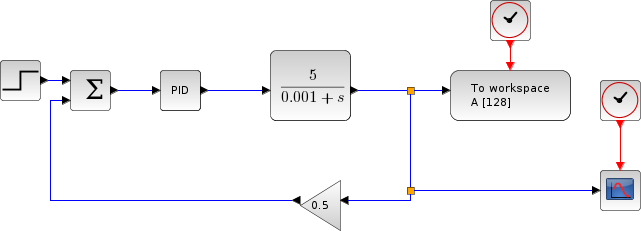

I'm not sure if I understand what you mean here. > uses another in the Arduino code, things won't work.
SCILAB SERIAL PORT EXAMPLE CODE
> automagically, but if the OP hardwires one scheme in the Tcl code and the > The only possible "gotcha" is line termination: Tcl *should* do this > But why do that when "gets" already includes all that "line-by-line" > further wrap line by line handling on top of the data read returns.

> The "read" command does not do line-by-line itself (you would have to The communication parameters are set to 19200 bauds, no parity, 8 databits, 1 stop bit. COMMANDS SERIAL OPERATIONS: - open: Opens the specified serial port numbered from 1 to 254. > should use the "gets" command to do that. Serial TCL toolbox is required: GENERAL equivalent SYNTAXES: osciOX80(,, ) osciOX80 is a case-unsensitive string specifying the action to perform. > channel (does not matter that it is a serial port) line by line, you > And the answer you were given is correct.

On Saturday, Maat 5:28:09 PM UTC+1, Robert Heller wrote: I found a solution myself which you may see here:Ĭomments to improve the solution are highly appreciated. But in short the issue was that the function returned empty or incomplete lines. Well, I had left a comment in that page explaining why that solution does not work. > when you hide all the information from them? > you made to your code without ever seeing it, and answer your question > How do you expect others to read your mind, remotely sense what changes > reply simply says "still does not work" (without revealing *anything* > Your solution page shows you were given the correct answer. I tried solving it myself as I have explained here:
SCILAB SERIAL PORT EXAMPLE SERIES
> Where I want to read a series of numbers in CSV format. Translating - build up new functions - mfile2sciġ9 Summary speed graphics signal processingĢ1 In my opinion: Scilab is capable and can be an alternative to Matlab.On Saturday, Maat 3:50:36 PM UTC+1, Rich wrote: Measured data (slowly varying and corrupted by random noise) reconstruction of the underlying smooth function Pcg (preconditioned conjugate gradients method) Scilab does not provide a pcg method Scilin (IRISA)ġ4 Demo Solving Ax=1 for n=100 2D-Poisson matrix generated by poisson2d_kron While expression, statements end if expr then statements elseif expr then statements else statements endħ Overview (2) select expr case expr1 then instructions case exprn then instructionsn endĨ Overview (3) = argn(0) error warningĩ Example (demo) poisson2d_kron.m poisson2d_kron.sci mfile2sciġ1 Sparse matrices Three different algorithms to generate the 2D-Poisson matrix: - set the elements one by one - block wise - kronecker productġ3 Solving a system Ax=b in this case Ax = 1 yes, but.Ĥ Demo Linear Algebra - basics (how to enter matrices etc.) - compute with matrices - solving systems of equations - hessenberg form - LU-, QR-decomposition - eigenvalues, -vectors - SVDĥ Programming introduction / overview example: poisson2d_kronĦ Overview (1) for var = expr, statement.

Introduction to Scilab: - linear algebra - programming Parts of my term work: - sparse matrices - Savitzky-Golay filter - performance comparison My own experiencesģ Scilab developed since 1990 at INRIA / ENPC (France) open sourceįree of charge high quality toolboxes available - artificial network - serial port similar to Matlab. 2 What‘s going on? Few words about Scilab‘s origin


 0 kommentar(er)
0 kommentar(er)
